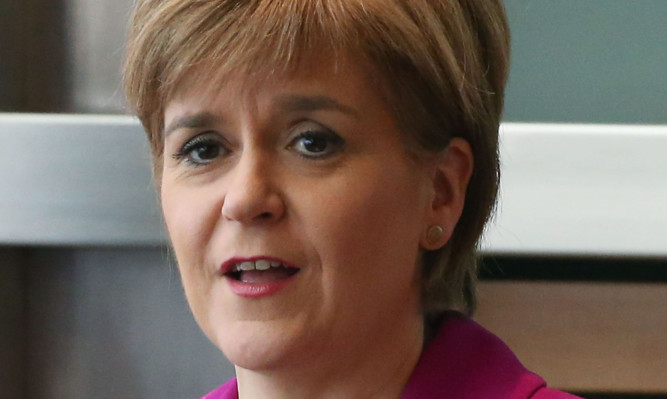Nicola Sturgeon has dismissed Chancellor George Osborne’s claim that he is giving Britain a pay rise with the introduction of a new “national living wage”.
In the first Conservative Budget for almost 20 years, Mr Osborne announced that from April next year all workers over the age of 25 will be entitled to £7.20 an hour – rising to £9 by 2020.
The Chancellor hailed the measure as part of a new “higher-wage, lower-tax, lower-welfare” Britain.
But the Scottish First Minister insisted the move does not amount to the introduction of a living wage, pointing out this is already set at £7.85 everywhere but London.
She tweeted: “£7.20ph nxt yr & £9 by 2020 is increase in minimum wage (tho offset by cuts in tax credits) but it’s not living wage – LW is already £7.85.”
Meanwhile, Susan McPhee, of Citizens Advice Scotland, said that, while it welcomes a move towards a living wage economy, “it looks like for most people this will not be enough to offset the impact of the wider cuts”.
Ms McPhee, head of policy at CAS, added: “We note too that the projected minimum wage rise to £7.20 next year still falls short of the Scottish living wage which is currently £7.85.”
Grahame Smith, general secretary of the Scottish Trades Union Congress (STUC) ,was also critical, saying: “The Chancellor’s so-called national living wage, pitched at £7.20 next year, will be nothing of the kind and is simply a cheap gimmick aimed at undermining the successful work we have undertaken to promote a meaningful living wage that genuinely helps people out of in-work poverty.”
As he unveiled the measure, Mr Osborne told MPs in the House of Commons: “Britain deserves a pay rise and Britain is getting a pay rise.”
Scottish Secretary David Mundell said afterwards that the “national living wage is an essential part of the move from a low-wage, high-tax, high-welfare society to a higher-wage, lower-tax, lower-welfare society”.
He added: “It ensures that work pays and reduces reliance on the State topping up wages through the benefits system.”
In the run-up to May’s general election, the SNP backed an increase in the minimum wage to £8.70 an hour by 2020.
Scottish Tory finance spokesman Murdo Fraser said: “Here we have a Conservative Government going much further to help working people in Scotland than the SNP ever would have.
“It’s humiliating for the Scottish Government to demand devolution of the minimum wage, only to set it at a lower rate than the rest of the UK.
“That would have penalised low-paid workers north of the border, and provides more evidence of why Scotland is so much better off as part of the UK.”
